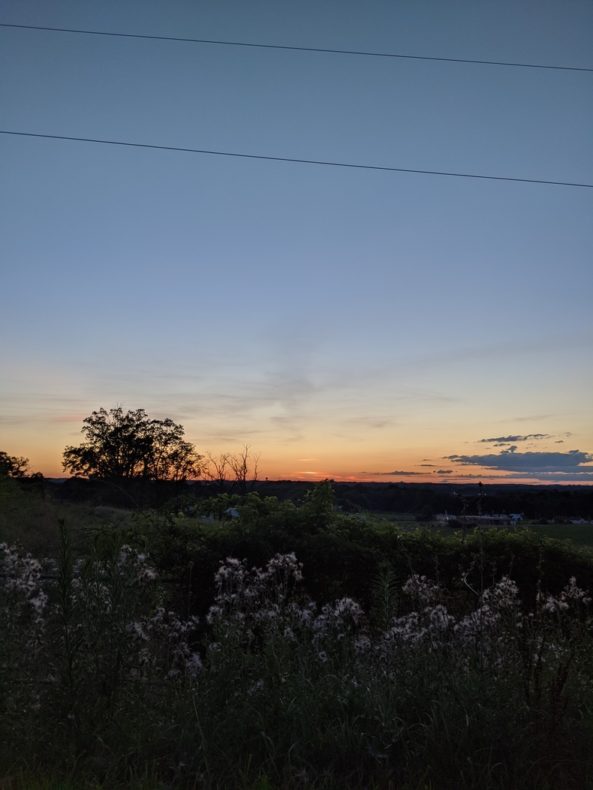
It was an unusual scene, last Tuesday night in a suburb of Washington, D.C. My mom and I were in lawn chairs on the edge of a closed road. My dad was wandering around with his camera on a tripod. A friend sat 10 feet farther down the road in her lawn chair. Strangers came and went, a little farther away. We all gazed off to the west, over the rare suburban open space.
We were looking for the comet. We arrived soon after sunset and, cheered by the nearly-cloudless western horizon, settled down to wait, with cookies. Wood thrushes sang from the woods. As the sunlight faded, the fireflies came out, puttering around above the road’s grassy shoulder. The lights came on in front of us. A few bats flew over. Eventually it got dark enough to start looking seriously.
This was only the second night Comet NEOWISE was visible in the evening, and one of the nights when it was brightest, but it was still very dim. My friend spotted it first; I eventually caught on to the faintest slash in the evening sky, the kind of dim light that disappears if you look directly at it. It got brighter as the sky got darker. Even after full dark, about 10:30 p.m., it was still a very dim slash. But unmistakable: the comet and its tail, receding after its swing around the sun.
I’m so sick of this pandemic. I’m sick of staying home. I’m sick of this heat wave. I’m sick of our terrible leadership. I’m sick of our inability to care about public health. I find myself fantasizing more than usual about moving to some other country.
So it’s nice, at times like this, to look down at the fireflies and out, through the atmosphere and across millions of miles of space, at a dirty snowball, trailing light.
When we left, it was as dark as it gets in the close-in suburbs of D.C., which is to say, not very dark. Gray tree frogs bleated from the trees.
I gather that a rarely-appearing comet’s orbital period can vary, so let’s call it 6,000 years. In 6,000 years, when NEOWISE swings by again, what will the Earth be like? Will humans still live here? Probably. 6,000 years isn’t that long, and we seem pretty good at survival. What about 36,000 years from now, or 600,000? In 6 million years, will a tree frog species have taken over? Will they divide into factions and shout at each other on their froggy social media? In 600 million years, will slime molds put on jaunty hats and take to the airwaves to explain why this particular kind of slime mold is the best slime mold of all time, and if you disagree you’re a traitor, and never mind what the slime mold scientists say about how infections work?
Probably. But they’ll still have comets, too.
Photo: Helen Fields
A most appropriate meditation on our current state against the backdrop of a timeless celestial visitor. I’m in the DC suburbs, too, and hope to spot the comet sometime soon!